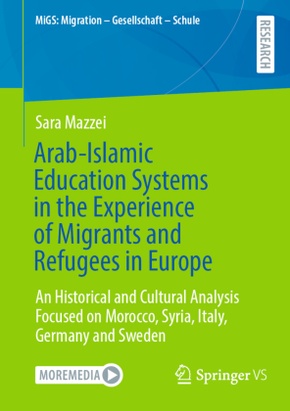Arab-Islamic Education Systems in the Experience of Migrants and Refugees in Europe - An Historical and Cultural Analysis Focused on Morocco, Syria, Italy, Germany and Sweden
| Verlag | Springer |
| Auflage | 2025 |
| Seiten | 388 |
| Format | 14,8 x 2,1 x 21,0 cm |
| Gewicht | 529 g |
| Artikeltyp | Englisches Buch |
| Reihe | MiGS: Migration - Gesellschaft - Schule |
| ISBN-10 | 3658474831 |
| EAN | 9783658474836 |
| Bestell-Nr | 65847483A |
In the last decade, Europe has welcomed numerous migrants and refugees from Arab countries. Their scholastic inclusion has been challenging, and the teaching staff had to sometimes deal with unfamiliar realities. The issue has been addressed by various perspectives, from sociology to psychology, insights from which are gathered in intercultural education. In it, there are scarcity of studies that delve into pupils cultural backgrounds, and countries of origin s history is seldom regarded as a decisive factor in the formation of identity. Among Arabic-speaking communities the Moroccan and Syrian ones are the most significant and Morocco and Syria have interesting histories and education systems. Using Nussbaum's (2010) multifactorial analysis, this research aims to better understand the educational universe where Arabic-speaking pupils come from, focusing on humanities and religious education in the experience of pupils, especially from Morocco and Syria. Methodology comprehen ds qualitative empirical research conducted in Europe. Results show the differences experienced by pupils in their educational paths among diverse Arab and European countries and the more sensitive topics they encounter in their education in Europe in relation to their identity.
Inhaltsverzeichnis:
Introduction.- Background situation in European host countries.- Theoretical framework.- Methodology.- Historical and cultural background of Arab educational systems.- Economy and social structures of education systems: public/private dichotomy, channelling,
selectiveness and the classification of sciences .- Religion.- Humanities.- Gender issues .- Minorities and languages issues.- Identities and Belongings.- Conclusion and further research.- References.

